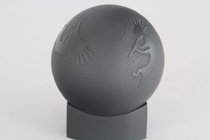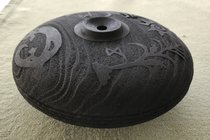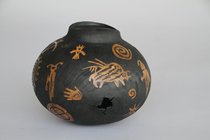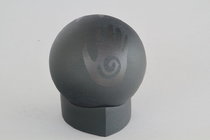I'm making two matching end tables turned on the lathe from red oak. 19" top, 16" base, and 20" tall pedestal. My wife wants them black, I've tried a couple of oil based stains and it isn't what she wants so I ebonized a couple samples one by burning with a torch and another by making the vinegar/steel wool solution. The vinegar/ steel wool solution does good except on the sapwood. Burning does the job, but is kind of messy until the finish is applied. After reading a bunch of posts here I've decided to use Fiebings usmc black leather dye because she wants an even color and I don't want paint. Some questions for those of you experienced with this type of finish: how much should I buy ? How careful do you need to be about applying it evenly (spray or brush) ? Can I apply the dye before assembly, I've read dyes don't affect glue up. How far does the dye penetrate the wood ? I want a true black, should I get usmc black or plain black ? I'm planning on using sprayed conversion varnish for the cover finish, the directions on the can say it can be used on dried stains. Thanks in advance.
Last edited:





